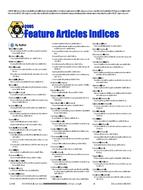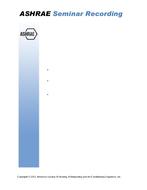Click here to purchase
In many countries, the mixing ventilation system (hereinafter referred to as MV) is the most common and widely used system in office buildings for decades, even after the development of the displacement ventilation system (hereinafter referred to as DV). It is believed that DV has better ventilation efficiency compared to MV. However, DV could have problems such as vertical temperature difference in the occupied zone, horizontal temperature distribution, and performance in the heating mode. To overcome these disadvantages, the impinging jet ventilation system (hereinafter referred to as IJV) has been proposed as a new air distributing system. This work aims to propose a simplified calculation model for IJV. To do this, a parametric study is required, and CFD prediction was chosen as the method to facilitate changing parameters. In the previous study, the authors validated CFD analysis method by conducting both CFD and full-scale experiment, and this paper presents a parametric study. The shape, position, and the number of IJV terminals were changed as parameters. For understanding the effect of the shape of IJV terminals, round and square supply ducts were applied in a room with two terminals. As for the number of terminals, four cases were studied, i.e., one, two, four and six. The position of IJV terminals was also changed in the case with four IJV terminals, and terminals were placed at each corner of the room or centre of each wall. The result shows that the shape and location of IJV terminals does not have a significant influence on mean vertical temperature profile, while the number of IJV terminals strongly affects the velocity and temperature profile. In addition, DR was significantly large when there is only one supply terminal.
Product Details
- Published:
- 2022
- Number of Pages:
- 8
- File Size:
- 1 file , 4.1 MB
- Product Code(s):
- D-IAQ2020-C2-C24
- Note:
- This product is unavailable in Russia, Belarus


